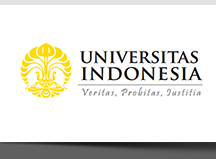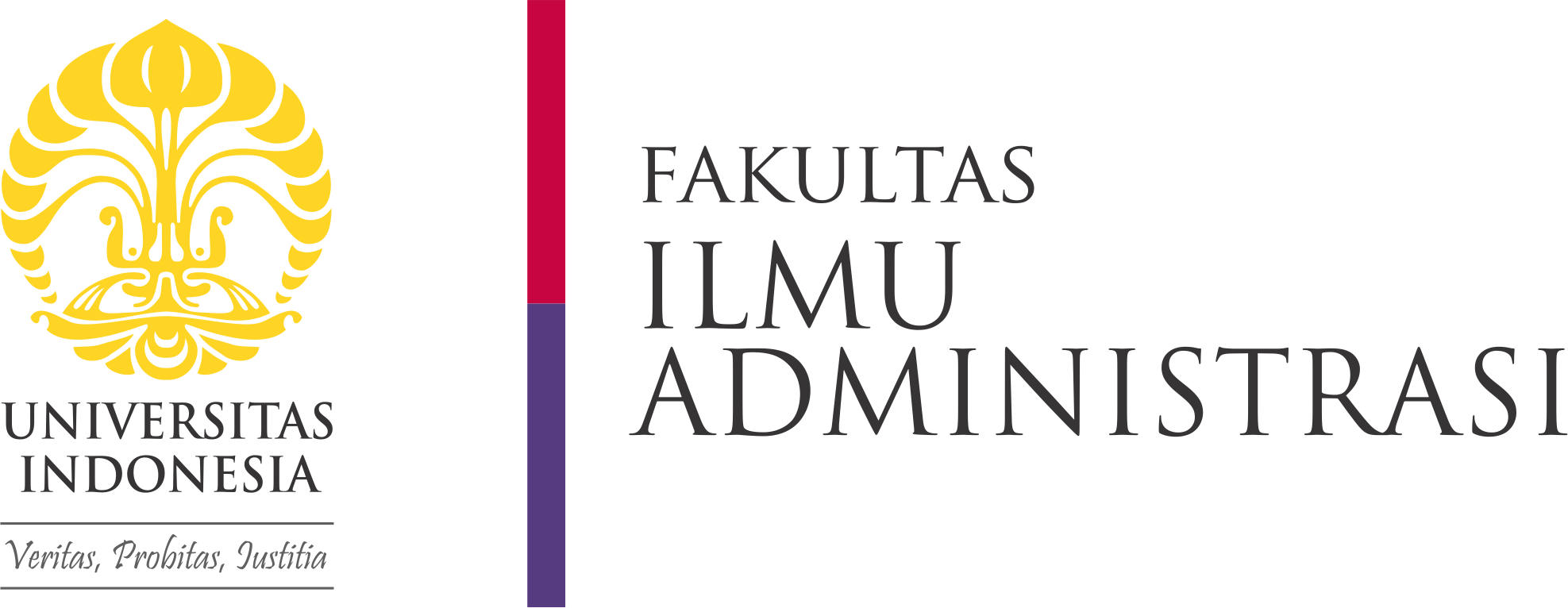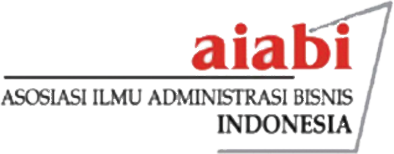Creative Commons License

This work is licensed under a Creative Commons Attribution-Share Alike 4.0 International License.
Abstract
The relationship between Human Resource Management (HRM) practices and employee well-being is complex and often contradictory. While HRM practices can enhance employee well-being through various mechanisms, they can also negatively impact well-being, especially in contexts of high-demand jobs. This study investigates the mediating roles of job crafting and work engagement in this relationship. Data from 100 hotel employees in Bandung, Indonesia, were analyzed using Partial Least Squares (PLS). While HRM practices did not directly influence well-being, they significantly impacted job crafting. Interestingly, job crafting, not work engagement, emerged as a strong mediator between HRM practices and employee well-being. These findings suggest that employee-oriented HRM practices promoting autonomy (e.g., flexible work arrangements) empower hotel staff to personalize their work, ultimately leading to greater well-being. The study challenges the traditional view of work engagement as the sole mediator and highlights the under-explored role of job crafting in this context. Future research should explore the influence of individual differences and organizational culture on this complex relationship.
References
Aboramadan, M., Dahleez, K., & Hamad, M. H. (2020). Servant leadership and academics outcomes in higher education: the role of job satisfaction. International Journal of Organizational Analysis, 29(3), 562–584. https://doi.org/10.1108/IJOA-11-2019-1923
Aktar, A., & Pangil, F. (2018). Mediating role of organizational commitment in the relationship between human resource management practices and employee engagement: Does black box stage exist? In International Journal of Sociology and Social Policy (Vol. 38, Issues 7–8). https://doi.org/10.1108/IJSSP-08-2017-0097
Ang, S. H., Bartram, T., McNeil, N., Leggat, S. G., & Stanton, P. (2013). The effects of high-performance work systems on hospital employees’ work attitudes and intention to leave: A multi-level and occupational group analysis. International Journal of Human Resource Management, 24(16), 3086–3114. https://doi.org/10.1080/09585192.2013.775029
Ang, S. H., Cavanagh, J., Southcombe, A., Bartram, T., Marjoribanks, T., & McNeil, N. (2017). Human resource management, social connectedness and health and well-being of older and retired men: the role of Men’s Sheds. International Journal of Human Resource Management, 28(14), 1986–2016. https://doi.org/10.1080/09585192.2015.1088886
Bakker, A. B., & Oerlemans, W. G. M. (2019). Daily job crafting and momentary work engagement: A self-determination and self-regulation perspective. Journal of Vocational Behavior, 112(January 2018), 417–430. https://doi.org/10.1016/j.jvb.2018.12.005
Bakker, A. B., Rodríguez-Muñoz, A., & Sanz Vergel, A. I. (2016). Modelling job crafting behaviours: Implications for work engagement. Human Relations, 69(1), 169–189. https://doi.org/10.1177/0018726715581690
Boselie, P. (2014). EBOOK: Strategic Human Resource Management: A Balanced Approach. July. https://books.google.com/books?hl=en&lr=&id=vMovEAAAQBAJ&oi=fnd&pg=PR1&dq=modern+political+party+management+models+strategies&ots=p94NX7WP74&sig=v6QaOaZ2WPa8OOcHKFoHV4LPoeQ
Cheewakoset, S., Popaitoon, P., & Decharin, P. (2023). Flexibility-oriented human resource management system and employee ambidexterity: a moderating role of psychological capital. International Journal of Business Excellence, 29(2), 288–308. https://doi.org/10.1504/IJBEX.2022.10050300
Conway, E., Fu, N., Monks, K., Alfes, K., & Bailey, C. (2016). Demands or Resources? The Relationship Between HR Practices, Employee Engagement, and Emotional Exhaustion Within a Hybrid Model of Employment Relations. Human Resource Management, 55(5), 901–917. https://doi.org/10.1002/hrm.21691
Cooper, B., Wang, J., Bartram, T., & Cooke, F. L. (2019). Well-being-oriented human resource management practices and employee performance in the Chinese banking sector: The role of social climate and resilience. Human Resource Management, 58(1), 85–97. https://doi.org/10.1002/hrm.21934
Crawford, E. R., LePine, J. A., & Rich, B. L. (2010). Linking job demands and resources to employee engagement and burnout: A theoretical extension and meta-analytic test. Journal of Applied Psychology, 95(5), 834–848. https://doi.org/10.1037/a0019364
Cropanzano, R., & Mitchell, M. S. (2005). Social exchange theory: An Interdisciplinary review. Journal of Management, 31(6), 874–900. https://doi.org/10.1177/0149206305279602
Dechawatanapaisal, D. (2018). Examining the relationships between HR practices, organizational job embeddedness, job satisfaction, and quit intention: Evidence from Thai accountants. Asia-Pacific Journal of Business Administration, 10(2–3), 130–148. https://doi.org/10.1108/APJBA-11-2017-0114
Derks, D., van Duin, D., Tims, M., & Bakker, A. B. (2015). Smartphone use and work-home interference: The moderating role of social norms and employee work engagement. Journal of Occupational and Organizational Psychology, 88(1), 155–177. https://doi.org/10.1111/joop.12083
Frenkel, S. J., Li, M., & Restubog, S. L. D. (2012). Management, Organizational Justice and Emotional Exhaustion among Chinese Migrant Workers: Evidence from two Manufacturing Firms. British Journal of Industrial Relations, 50(1), 121–147. https://doi.org/10.1111/j.1467-8543.2011.00858.x
Fréour, L., Pohl, S., & Battistelli, A. (2021). How Digital Technologies Modify the Work Characteristics: A Preliminary Study. Spanish Journal of Psychology, 1–21. https://doi.org/10.1017/SJP.2021.12
Gaskin, J., & Lowry, P. B. (2014). Partial Least Squares (PLS) Structural Equation Modeling (SEM) For Building And Testing Behavioral Causal Theory: When To Choose It And How To Use It. IEEE Transactions on Professional Communication, 57(2), 123–146.
Guan, X., & Frenkel, S. (2018). How HR practice, work engagement and job crafting influence employee performance. Chinese Management Studies, 12(3), 591–607. https://doi.org/10.1108/CMS-11-2017-0328
Guest, D. E. (2017). Human resource management and employee well-being: towards a new analytic framework. Human Resource Management Journal, 27(1), 22–38. https://doi.org/10.1111/1748-8583.12139
Hair, Joseph & Hult, G. Tomas M. & Ringle, Christian & Sarstedt, M. (2022). A primer on partial least squares structural equation modeling (PLS-SEM). In Sage Publishing (Issue 3). https://doi.org/10.1007/978-3-030-80519-7
Hakanen, J. J., Peeters, M. C. W., & Schaufeli, W. B. (2018). Different types of employee well-being across time and their relationships with job crafting. Journal of Occupational Health Psychology, 23(2), 289–301. https://doi.org/10.1037/ocp0000081
Harju, L. K., Kaltiainen, J., & Hakanen, J. J. (2021). The double-edged sword of job crafting: The effects of job crafting on changes in job demands and employee well-being. Human Resource Management. https://doi.org/10.1002/hrm.22054
Ho, H., & Kuvaas, B. (2020). Human resource management systems, employee well-being, and firm performance from the mutual gains and critical perspectives: The well-being paradox. Human Resource Management, 59(3), 235–253. https://doi.org/10.1002/hrm.21990
Kianto, A., Sáenz, J., & Aramburu, N. (2017). Knowledge-based human resource management practices, intellectual capital and innovation. Journal of Business Research, 81(August), 11–20. https://doi.org/10.1016/j.jbusres.2017.07.018
Kooij, D. T. A. M., Guest, D. E., Clinton, M., Knight, T., Jansen, P. G. W., & Dikkers, J. S. E. (2013). How the impact of HR practices on employee well-being and performance changes with age. Human Resource Management Journal, 23(1), 18–35. https://doi.org/10.1111/1748-8583.12000
Lu, C. qin, Wang, H. jiang, Lu, J. jing, Du, D. yang, & Bakker, A. B. (2014). Does work engagement increase person-job fit? The role of job crafting and job insecurity. Journal of Vocational Behavior, 84(2), 142–152. https://doi.org/10.1016/j.jvb.2013.12.004
Luu, T. (2018). Discretionary HR practices and proactive work behaviour: the mediation role of affective commitment and the moderation roles of PSM and abusive supervision. Public Management Review, 20(6), 789–823. https://doi.org/10.1080/14719037.2017.1335342
Marinova, S. V., Peng, C., Lorinkova, N., Van Dyne, L., & Chiaburu, D. (2015). Change-oriented behavior: A meta-analysis of individual and job design predictors. Journal of Vocational Behavior, 88, 104–120. https://doi.org/10.1016/j.jvb.2015.02.006
Mehta, B. S. (2023). Changing Nature of Work and the Gig Economy: Theory and Debate. FIIB Business Review, 12(3), 227–237. https://doi.org/10.1177/2319714520968294
Murphy, C., & Turner, T. (2023). Employment stability and decent work: Trends, characteristics and determinants in a liberal market economy. Journal of Industrial Relations, 65(2), 211–234. https://doi.org/10.1177/00221856231151966
Ngo, T., Le, D., & Doan, T. (2023). “Are your employees mentally prepared for the pandemic?” Wellbeing-oriented human resource management practices in a developing country. International Journal of Hospitality Management, 109(December 2020), 103415. https://doi.org/10.1016/j.ijhm.2022.103415
Oldham, G. R., & Fried, Y. (2016). Job design research and theory: Past, present and future. Organizational Behavior and Human Decision Processes, 136, 20–35. https://doi.org/10.1016/j.obhdp.2016.05.002
Parent-Lamarche, A., Dextras-Gauthier, J., & Julien, A. S. (2023). Toward a new model of human resource management practices: construction and validation of the High Wellbeing and Performance Work System Scale. Frontiers in Psychology, 14(May), 1–15. https://doi.org/10.3389/fpsyg.2023.1151781
Pavot, W., Diener, E. (2009). Review of the Satisfaction With Life Scale. Social Indicators Research Series, 101–102. https://doi.org/10.1007/978-90-481-2354-4
Pradipto, M. S., & Albari, A. (2021). The Role of Service Quality on Subjective Well-Being of Students, With Mediators of Satisfaction and Customer Company Identification. Jurnal Manajemen Indonesia, 21(1), 43. https://doi.org/10.25124/jmi.v21i1.2648
Saks, A. M. (2019). Antecedents and consequences of employee engagement revisited. Journal of Organizational Effectiveness, 6(1), 19–38. https://doi.org/10.1108/JOEPP-06-2018-0034
Saragih, S., Margaretha, M., & Anantyanda, L. (2021). Job Autonomy, Job Crafting and Employees’ Well-Being During Working From Home. Jurnal Manajemen Dan Kewirausahaan, 23(2), 177–185. https://doi.org/10.9744/jmk.23.2.177-185
Saragih, S., Setiawan, S., Markus, T., & Rhian, P. (2021). Benefits and Challenges of Telework During The Covid-19 Pandemic. International Research Journal of Business Studies, 14(2), 129–135. https://doi.org/10.21632/irjbs.14.2.129-135
Saunders, Mark; Lewis, Philip; Thornhill, Adrian; Genot, E. J. (2018). Research Methods for Business Students. In Synthese (Vol. 195, Issue 5).
Schaufeli, W. B. (2013). (2013). What is engagement? In Employee Engagement in Theory and Practice (pp. 15–35). Routledge. https://doi.org/https://doi.org/10.4324/9780203076965-10
Tims, M., Bakker, A. B., & Derks, D. (2012). Development and validation of the job crafting scale. Journal of Vocational Behavior, 80(1), 173–186. https://doi.org/10.1016/j.jvb.2011.05.009
Tims, M., Bakker, A. B., & Derks, D. (2014). Daily job crafting and the self-efficacy – Performance relationship. Journal of Managerial Psychology, 29(5), 490–507. https://doi.org/10.1108/JMP-05-2012-0148
Tims, M., Bakker, A. B., & Derks, D. (2015). Job crafting and job performance: A longitudinal study. European Journal of Work and Organizational Psychology, 24(6), 914–928. https://doi.org/10.1080/1359432X.2014.969245
Tims, M., Derks, D., & Bakker, A. B. (2016). Job crafting and its relationships with person-job fit and meaningfulness: A three-wave study. Journal of Vocational Behavior, 92, 44–53. https://doi.org/10.1016/j.jvb.2015.11.007
van den Heuvel, M., Demerouti, E., & Peeters, M. C. W. (2015). The job crafting intervention: Effects on job resources, self-efficacy, and affective well-being. Journal of Occupational and Organizational Psychology, 88(3), 511–532. https://doi.org/10.1111/joop.12128
Vanhala, S., & Tuomi, K. (2006). HRM, Company Performance and Employee Well-being. Management Revu, 17(3), 241–255. https://doi.org/10.5771/0935-9915-2006-3-241
Vu, T. Van. (2022). Perceived socially responsible HRM, employee organizational identification, and job performance: the moderating effect of perceived organizational response to a global crisis. Heliyon, 8(11), e11563. https://doi.org/10.1016/j.heliyon.2022.e11563
Wrzesniewski, A., & Dutton, J. E. (2001). Crafting a Job: Revisioning Employees as Active Crafters of Their Work. The Academy of Management Review, 26(2), 179. https://doi.org/10.2307/259118
Zhang, X., Lin, Z., Liu, Y., Chen, X., & Liu, D. M. (2020). How do human resource management practices affect employee well-being? A mediated moderation model. Employee Relations, 42(4), 903–919. https://doi.org/10.1108/ER-08-2019-0320
First Page
142
Last Page
152
Recommended Citation
Saragih, Susanti; Margaretha, Meily; and Suhada, Namira
(2024)
"Rethinking the Mediating Mechanism: HRM Practices and Employee Well-being,"
BISNIS & BIROKRASI: Jurnal Ilmu Administrasi dan Organisasi: Vol. 31:
No.
3, Article 3.
DOI: 10.20476/jbb.v31i3.1513
Available at:
https://scholarhub.ui.ac.id/jbb/vol31/iss3/3
Included in
Business Administration, Management, and Operations Commons, Human Resources Management Commons, Organizational Behavior and Theory Commons





